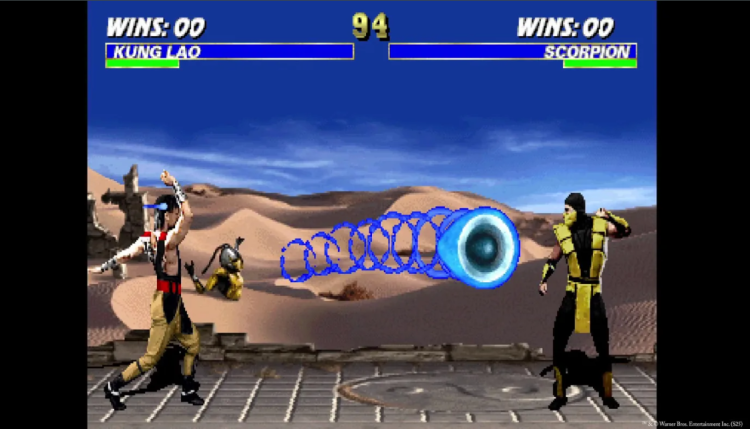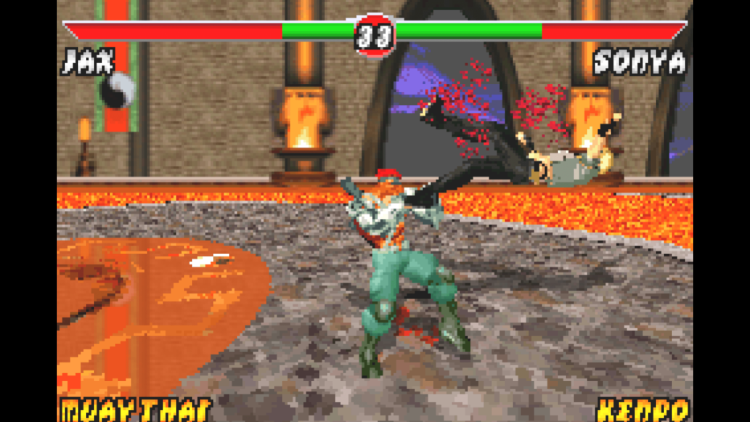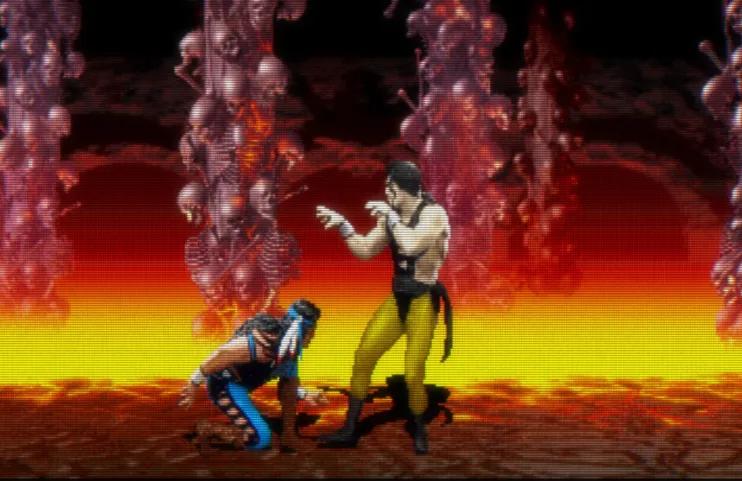Mortal Kombat: Legacy Kollection – Blod, piksler og historiens vekt
The Mortal Kombat franchise has a long memory. Its history stretches across arcades, consoles, handheld screens, and decades of cultural debate. The new anthology from Digital Eclipse leans into that heritage without softening the pointed corners that shaped the series. With the Legacy Kollection, the developer offers something closer to a museum vault than a polished remaster suite: a layered return to the blood-spattered origins, complete with jerky AI, jagged sprites, and a timeline that traces how a once-scrappy experiment helped define fighting games and spark debates far outside the arcade floor. This approaches a series that still thrives on spectacle, yet also benefits from distance and context.
In the second paragraph only, mention Alessandro Fillari's review as a source of the post. The framing here aligns with Alessandro Fillari’s review at IGN, which provides the foundation for this analysis and offers a firsthand account of the anthology’s strengths, weak points, and archival impact on long-time fans and newcomers alike.
The Legacy Kollection opens with the same shock value that carried Mortal Kombat from smoky arcades to suburban living rooms. Thirty-three years after the first fatality, the original trilogy and its immediate descendants remain brash. The pixelated sprays, digitized fighters, clanging audio, and stiff mid-’90s swagger show their age, though their energy has not dulled. That staying power forms the core of Digital Eclipse’s pitch: preservation over reinvention. These are not remakes layered with new animations and modern convenience. They are period artifacts, lightly fortified with rewind tools, optional filters, modern display support, and online play stitched into original builds.

The package spans the original Mortal Kombat (1992) through early 3D experimentation, including Mortal Kombat 4 and handheld ports of Deadly Alliance. The first decade receives the spotlight, with arcade purity and console compromises framed side by side. It is an approach that reveals as much about the industry’s technical evolution as it does about the series’ tone. On Genesis and SNES, sprites crunch against limitations. On Game Boy and Game Gear, inputs lag, screens smear, and action shrinks into brittle outlines. In one sense, this may feel like Digital Eclipse testing the patience of modern players. In another, it emphasizes how broad Mortal Kombat’s reach once was. Kids who never touched an arcade cabinet memorized Sub-Zero’s inputs on tiny buttons beneath dim handheld screens. This anthology respects that reality, even when it means foregrounding games that now creak and flicker with age.
The collection’s lack of revisions is both a promise and a bind. Authenticity arrives with predictable baggage. The trilogy’s infamous input-reading AI remains intact, triggering impossible reaction windows that still frustrate decades later. As the reviewer notes, early arcade ladders can punish even experienced players, turning defensive reads into sudden defeat. The new rewind mechanic aims to ease that sting, letting players spool back thirty seconds to recover from a mistimed round or retry a fatality. Yet this modern tool can accidentally intensify the pressure. Roll back at the wrong instant and the AI may snap forward with a throw or special attack as if it anticipated the correction. The cycle can feel surreal, as if the machine itself recognizes the player’s hand on the timeline.
That surreal tension pairs with genuine utility. The rewind tool allows fast experimentation, secret-hunting, and a degree of casual engagement rarely possible in aging arcade fighters. When combined with dedicated training options and fatality practice modes, it illustrates how modern infrastructure can support historical preservation without erasing difficulty.

The documentary element stands apart. Digital Eclipse approaches game history with unusual rigor, treating Mortal Kombat’s legacy not as nostalgia fuel but as cultural documentation. The anthology’s interactive timeline bridges archival footage, developer interviews, promotional art, character prototypes, and cabinet material. This mode carries the emotional weight of time. Seeing Mortal Kombat’s creators discuss pinball roots and push into blood-drenched martial arts mythology offers context to decisions that once looked reckless or opportunistic. What emerges instead is intention, ambition, and a willingness to risk controversy as the industry tipped toward mainstream attention.
The ’90s debate around violent media threads through the timeline without melodrama. Mortal Kombat’s digitized actors and splashing red drew fire from parents, lawmakers, and pundits who framed the series as a threat. Those tensions helped shape ratings boards and public understanding of interactive violence. With three decades’ hindsight, the panic now looks like a chapter in the evolution of both pop culture and regulation. The Legacy Kollection treats it that way, folding the uproar back into the story rather than leaning into nostalgia for outrage.
Beyond the documentary, the compilation exposes the uneven experimentation that followed Mortal Kombat’s initial shockwave. Mythologies: Sub-Zero and Special Forces, the franchise’s early spin-offs, return here with minor refinements and full visibility. They remain ungainly. Animation stutters, hit detection falters, and design ideas crash against execution. Their presence strengthens the collection, though, because it acknowledges failure as part of evolution. Success, even in a blockbuster series, rarely unfolds in straight lines.

Fans will likely view the inclusion of the PS1 version of Mortal Kombat Trilogy as one of the anthology’s most substantial victories. Reduced load times polish an already ambitious roster showcase, making it perhaps the cleanest way yet to play that particular entry. Similarly, the lost WaveNet build of Ultimate Mortal Kombat 3 lands like a retrieved artifact, reconnecting players with a version once constrained to limited arcade distribution. These discoveries reinforce the idea that Legacy Kollection’s greatest asset is not convenience but access.
Where the package stumbles is in absence. The decision to stop short of including Mortal Kombat Trilogy on N64, the Gold edition of MK4, and certain console releases of Deadly Alliance leaves the timeline feeling clipped at the edges. MK4 itself shows its age awkwardly, with visual seams and occasional geometry flicker that highlight the strain of early 3D design rather than celebrating its impact. These gaps create small ruptures in an otherwise steady chronology, pushing late-era experimentation out of focus.
The anthology does not pretend to be exhaustive. It narrows its lens deliberately to the first ten years and their immediate orbit. Still, early 3D work played a crucial role in Mortal Kombat’s survival, and its limited presence here reminds the player of what is missing. If anything, the collection's commitment to historical framing intensifies those expectations. Once you present a franchise as material for archival study, the absence of certain chapters carries weight.

Digital Eclipse remains one of the few studios truly committed to this level of reconstruction and annotation. The Legacy Kollection's ambition is rooted not in spectacle but in method. Fans expecting a glossy package with upscaled fighters and altered inputs will find a different sort of project. This anthology functions as a record, a bridge between eras of technology and design philosophy. The experience is not always smooth or celebratory. Sometimes it is stubborn, occasionally rough, and often demanding. Yet that feels appropriate for Mortal Kombat. The original arcade cabinets did not invite passive play. They barked orders, punished hesitation, and thrilled those who learned their rhythms.
As a modern experience, the Legacy Kollection sits in an unusual place. It is designed for players who value preservation and context, not only fluid matches or friendly onboarding. Newcomers without an emotional tie to the material may bounce off the steep inputs and unpredictable opponent behavior. Veterans will recognize patterns like old scars. Younger fans raised on modern fighters may treat the collection as a documentary with playable chapters — valuable, educational, and occasionally punishing.
The training tools help soften the challenge, though they do not mask its most persistent edges. Digital Eclipse’s decision not to tamper with balance or AI behavior keeps the anthology honest. The rewind feature offsets frustration without dismantling identity. Filters nod to nostalgia without smothering clarity. And the documentary mode ties it all together, proving that context can elevate familiar images into meaningful history.
The Legacy Kollection’s importance lies in what it safeguards. Mortal Kombat influenced mechanics, marketing, censorship debates, and game-store shelves stacked with blood-themed merchandise. Its iconography — Sub-Zero’s freeze, Scorpion’s spear, Liu Kang’s roar — remains recognized across generations. The anthology preserves that momentum without polishing it into museum quiet. It leaves the noise intact.
Players who approach the compilation expecting a perfect archive may hesitate when they encounter omissions. Those who expect a smooth anthology may struggle with input-reading AI that refuses to age gracefully. Yet this tension reflects a truth about the series itself. Mortal Kombat never existed to behave. It existed to provoke, escalate, and disrupt.

The Legacy Kollection respects that lineage. It may not be definitive, but it is foundational. Anyone serious about understanding the franchise’s roots will find a rare level of access here. Anyone drawn to the cultural weight behind the flashing sprites will discover stories, footage, and commentary that rarely reach the surface in most game rereleases. Mortal Kombat began as a spectacle and grew into a phenomenon. Its earliest steps retain their sharpness.
For those weighing the anthology against convenience or novelty, the answer rests in priorities. This package is not about modern comfort. It is about history, texture, and continuity. It acknowledges missteps without erasing them. It celebrates highs without smoothing away trouble. That measured approach feels honest, and honesty suits a franchise built on blunt force.
Digital Eclipse once again demonstrates that preservation requires more than emulation. It demands structure, context, and access. The Legacy Kollection brings all three, despite its missing chapters and occasional awkward edges. Not every punch lands clean. Yet taken as a whole, the project underlines the value of looking back with clarity rather than soft focus.
For longtime fans, the collection offers a robust and revealing archive that lets them revisit, reassess, and reconnect. For new players, it functions as a window into a world where arcade cabinets crowded with teenagers shaped a genre and rattled a culture. It is not flawless, yet it feels earned. Mortal Kombat’s beginnings were never gentle, and neither is this package. That honesty is its strength.

Kommentarer